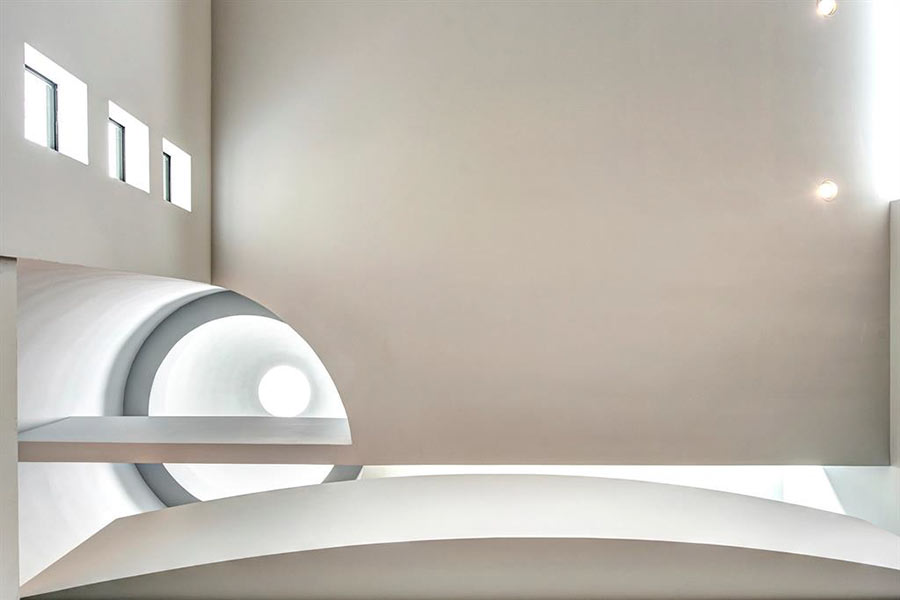COMMENT OF THE DAY: WHAT ’THERE’S NOWHERE TO PARK’ REALLY MEANS  “People would rather circle for hours for a spot that is 3 ft. from the door they wish to enter than to: A) pay to park B) walk.
So please keep in mind, when someone says ‘there’s nowhere to park in the village’ what they mean is:
There’s nowhere within 3 ft. of my destination to park.
Of course, everyone knows where they can park, but the last thing they want to do is walk from their car to their destination.” [toasty, commenting on Shake Shack Will Take Over La Madeleine’s Rice Village Space] Illustration: Lulu
“People would rather circle for hours for a spot that is 3 ft. from the door they wish to enter than to: A) pay to park B) walk.
So please keep in mind, when someone says ‘there’s nowhere to park in the village’ what they mean is:
There’s nowhere within 3 ft. of my destination to park.
Of course, everyone knows where they can park, but the last thing they want to do is walk from their car to their destination.” [toasty, commenting on Shake Shack Will Take Over La Madeleine’s Rice Village Space] Illustration: Lulu





A) pay to park
B) walk
And of those two option I’d pick B > A 99% of the time
The only thing worse is Valet Parking. You use Valet so that you don’t have to park the car, and then they just park it right in front – 3 steps from the front door – where you couldn’t park. That’s like making your cake and having someone else eat it. Valet Parking is real rip the way it is done.
As mentioned on the original comment thread, there’s oodles of overflow $1 parking at the nearby stadium. However, I suspect the problem isn’t available parking — it’s intelligently matching available parking spaces (which may be nearby but out of line-of-sight) with arriving drivers. In the Internet-of-Things era, this is a transportation breakthrough waiting to happen.
“Everyone knows where they can park”
.
Do they really? Is Rice letting people park on campus and walk into Rice Village? Have they built a bunch of new garages there? Seriously I’d like to know. I haven’t been to Rice Village in over a year and a half and I suspect things have changed.
.
European cities do a much better job at marking their parking and coordinating it. They have public garages that show up on maps and when you get there, they have clearly marked numbers of vacant spaces. (The only place in Houston where I’ve seen this is at IAH). So you park, walk where you need to go, and come back to your car later.
Your car is parked in the front only if it is a flashy high-ender, e.g. Ferrari, Lamborghini. For my dull Infiniti, I am happy to let them worry about it, as long as they know how to operate a stick shift.
@Gisgo, two things:
.
1) At El Real, the entire lot is coned off for valet parking on busy nights, so sometimes they end up parking your car in the spaces that are right in front of the restaurant. Doesn’t have to be flashy or expensive.
.
2) Re stick shift, last summer I attended a wedding reception at ZaZa. My date and I arrived in a well-loved 1997 Nissan pickup with weathered paint, a crack in the windshield, worn spots in the fabric of the bench seat, and a few extra items on the passenger-side floorboard — and, oh, yeah, 5-on-the-floor stick shift. ZaZa has NO self-parking; it’s all valet.
.
We handed over the truck to the Nigerian(?) valet who assured us in broken English that yes, he could drive a stick. We stood there with all of the very fancily dressed Range Rover and Porsche set, watching as the guy attempted to put the truck into the garage.
.
First he lurched forward and stalled out immediately after starting the truck, because we had left it in first gear and he didn’t know to depress the clutch pedal and/or otherwise take it out of gear. Then he figured out that part, and started rolling backwards because he couldn’t figure out how to get it into first gear and wasn’t bright enough to step on the brakes to get it to stop rolling backwards. Finally he got it moving in the forward direction, and we prayed that he didn’t smash it into anything in the garage, because that damned truck is irreplaceable. Nobody sells a new compact truck in the US anymore.
.
I think the Ferrari and Lambo owners who witnessed this were horrified at the thought of what the valets were doing to *their * cars.
I only go to Istanbul Grill because they let you double and triple park and then politely manage the car Tetris when someone needs to get out.
For everything except maybe a few restaurants on the Morningside-ish edge of the Village, the Rice parking lot is too far for a comfortable walk by Houston standards. The garage is a lot closer.
Not everyone knows where they can park. I’ve lived here all my life and never knew you could park at Rice if you weren’t a student there. I’m still not sure you can. And there is nothing in the Village that would inform visitors of that fact.
Re manual transmissions: I’m starting to think this is the best theft deterrent available. I took mine to the tire store and they had to call a guy to come drive it into the bay. The guys at the oil change place just let me drive it in and out now.
There’s absolutely nothing that would interest me in the village so much that I would park one county over at Rice and schlep 18 blocks like a hobo.
—
I do love manual cars, nothing like downshifting and power drifting up the cloverleaf on Memorial @ Waugh while your passengers scream for dear life.
Between the rooftop parking, street parking, and surface parking in front of shops that close early in the evening and then don’t enforce customer-only parking, I’ve never NOT found free parking in the Village near my destination. I don’t see what all the fuss is about.
Was at the Village this past Friday and couldn’t believe how dead it was, parking was definitely not a problem. Thought it might have something to do with spring break, but Rice U is on a different schedule from everyone else and was in session (and gearing up for Beer Bike).
Finally some common ground with @commonsense. The Waugh cloverleaf is where I introduced my daughter to the joys of rear wheel drive.
Joke’s on all you who never want to pay for parking. Newsflash, you already indirectly pay for hidden parking costs through the things that you buy, the rent that you pay, and/or the reduction in salary that you earn from your employer. The unfortunate thing is that everyone, including taxpayers, transit riders, pedestrians, bicyclists, and car-share riders also indirectly pay for those hidden parking costs even though they don’t park a vehicle. So you want to know a good way to find a parking spot? Go to place that makes you pay for it directly. Chances are you’ll have better luck finding a parking spot in places where you have to pay for it directly, not because less people will go, but because more people will find other ways to get there.
@JT100: “Joke’s on all you who never want to pay for parking. Newsflash, you already indirectly pay for hidden parking costs through the things that you buy, the rent that you pay, and/or the reduction in salary that you earn from your employer.”
.
No, the joke is on anyone who pays those “hidden” parking costs and then pays again for parking. The hidden costs are paid by everyone, including those who pay to park.
.
This is why it is smart to use a credit card (that pays cash back) for all purchases. The credit card processing fees are passed on to everyone, regardless of how they pay. Anyone paying with cash puts themselves at a disadvantage.
@Memebag The hidden parking costs become lower for everyone else (including drivers) when drivers actually pay directly for the parking spaces they are using. The hidden parking costs actually dissolve completely when either A) there is no supplied parking [gasp, this is actually possible] or B) supply of parking spaces or= cost per parking space.
@JT100: The price of parking goes up if only those who park pay it. If non-parkers pay (via hidden costs) then parkers have an advantage. Parkers have no incentive to change the existing model, and every reason to seek out free parking, since they are already paying for it.
.
And the businesses in The Village depend on those parkers. The people within walking distance plus mass transit users won’t bring in enough money to keep them going.
The hidden cost of parking doesn’t disappear when a business doesn’t provide parking. It just gets shifted to the adjacent businesses and neighborhoods that do provide parking. When these entities enact preferential parking for their customers/residents and hire parking enforcers, the cost of their parking goes way up.
America!